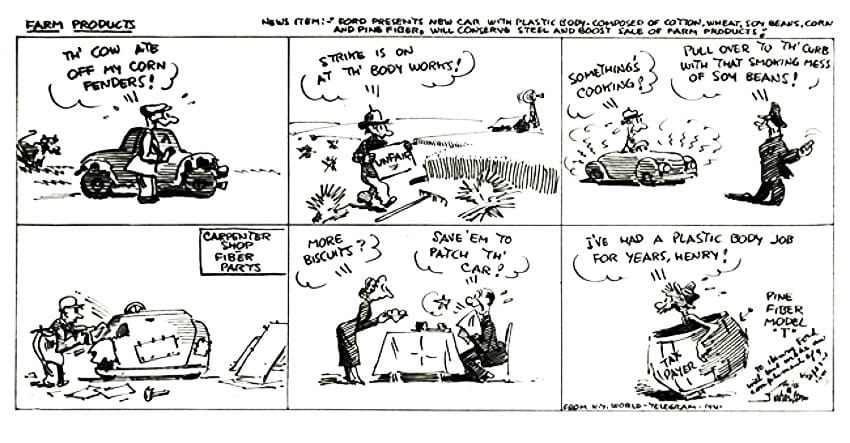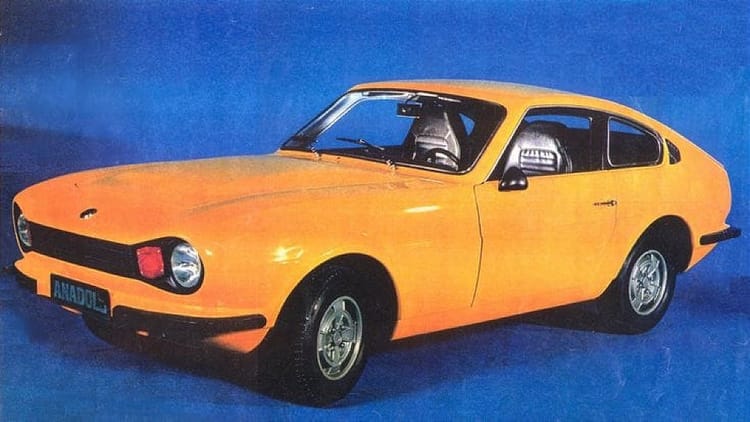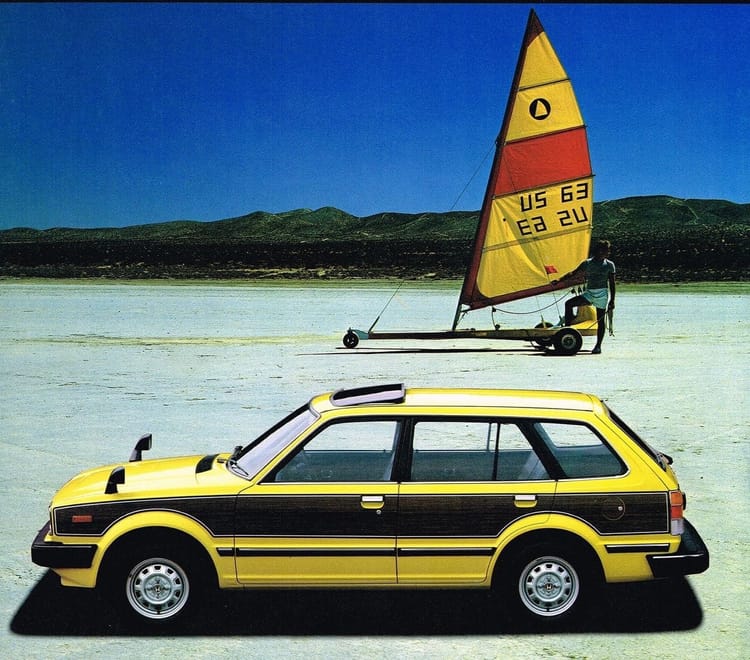Ford Soybean Car
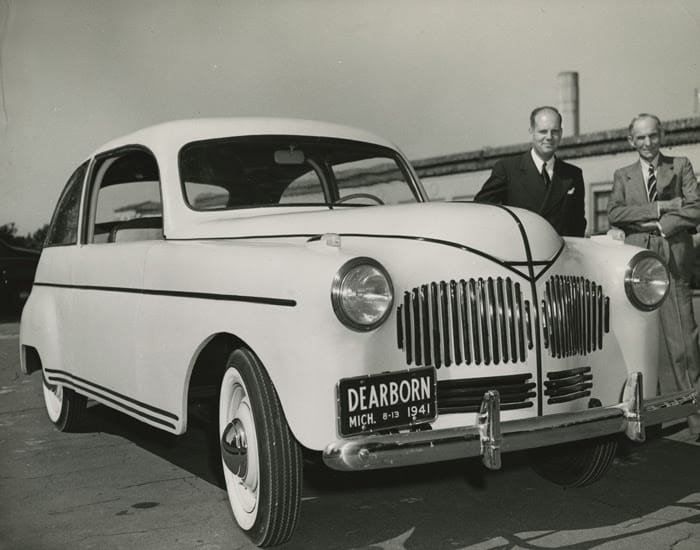
While “Soybean car” is not the most original name, Henry Ford showed this vehicle back in 1941 and — as many of you know — it's a pretty well-documented prototype.
If you'd like an overview of the car, Kurt Ernst wrote a great piece on it back in 2013 for Hemmings. (Or, read what The Henry Ford museum has to say about it.)
When I write about Henry Ford, it's with as much awestruck confusion as historians do — and with more than a few parallels to a certain E. Musk.
Know how Ford showed reporters how durable the Soybean Car was?
He swung an axe at it. True story:
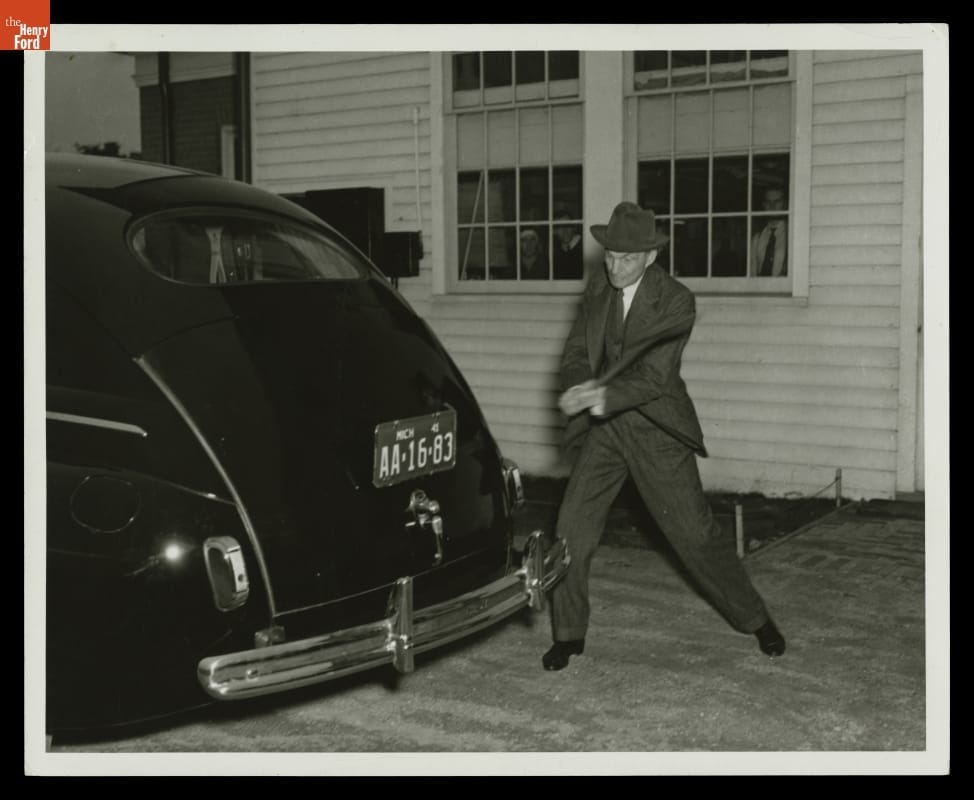
Here is a man (Ford) who invested huge amounts of money into alternative construction methods and fuels, who built recycling, sustainability, and thriftiness into his factories — and was also a man who hired goons to police his workers at their homes, not to mention helped fund an anti-semitic newspaper that garnered actual awards from N-A-Z-I Germany.
Ford accepted the awards, by the way.
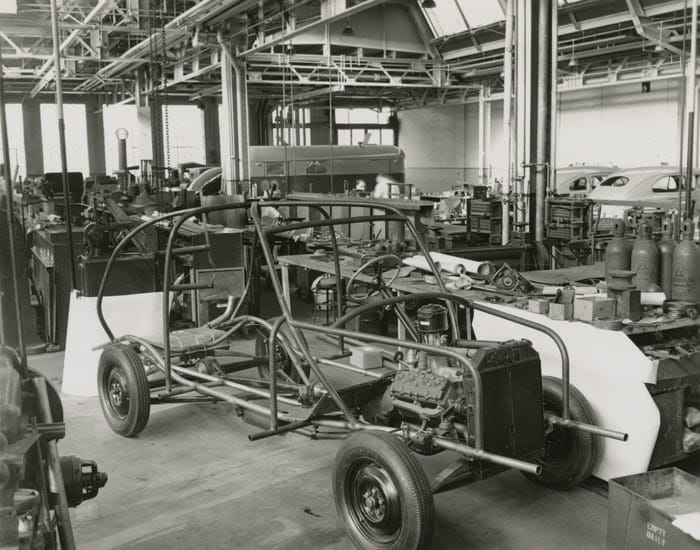
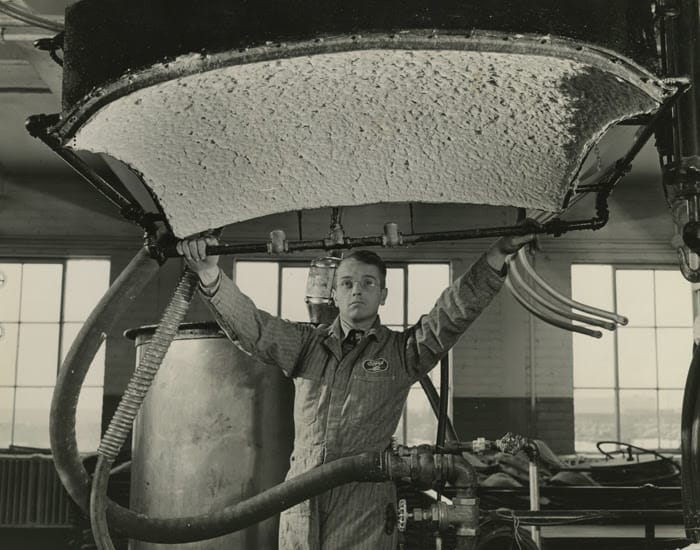
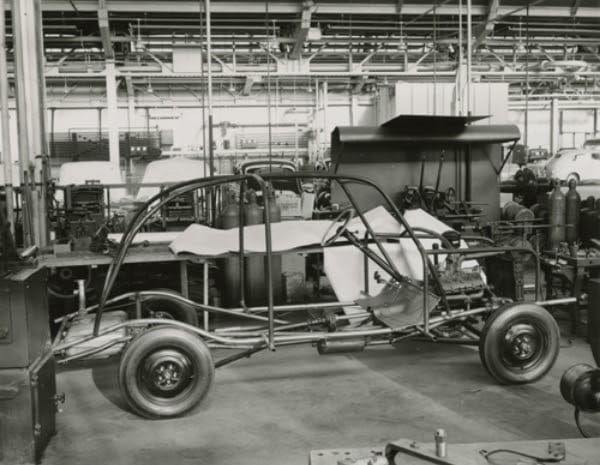
Ford Soybean Car under construction • The Henry Ford museum
If the world revolved around me like it did Henry Ford, I hope I'd be nicer to my fellow man, something he often fell short of. (Look into his relationship with son Edsel.)
See, when Ford was at the top of his game, there were, in some ways, two Henry Fords: one, the father of the Model T, who offered great pay for his workers, and who was more in tune with ecology than your local botanist.
The other Ford was content to build planned communities — read the book Fordlandia by Greg Grandin — where it’s covered in great detail how workers were required to do all sorts of extra stuff, like tend to a garden, send their kids to Ford-supported schools, and even sing old timey hymns. Tried it in Michigan, too.
This may not sound terrible, but these requirements were often policed with the same fervor directed at all other aspects of the Ford Motor Company.
Yet, his views on ecology and a product’s lifecycle were ahead of their time.
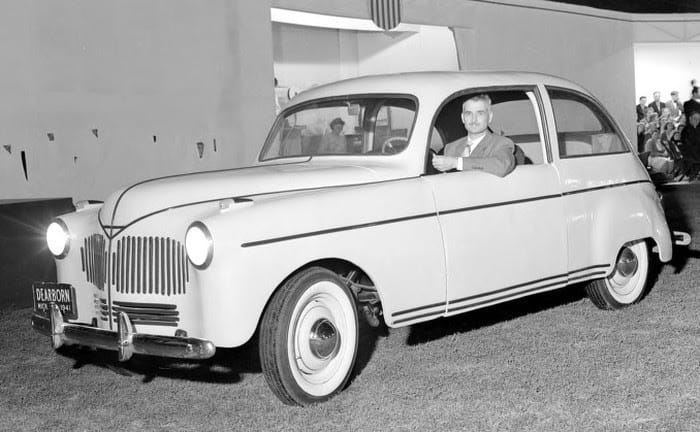
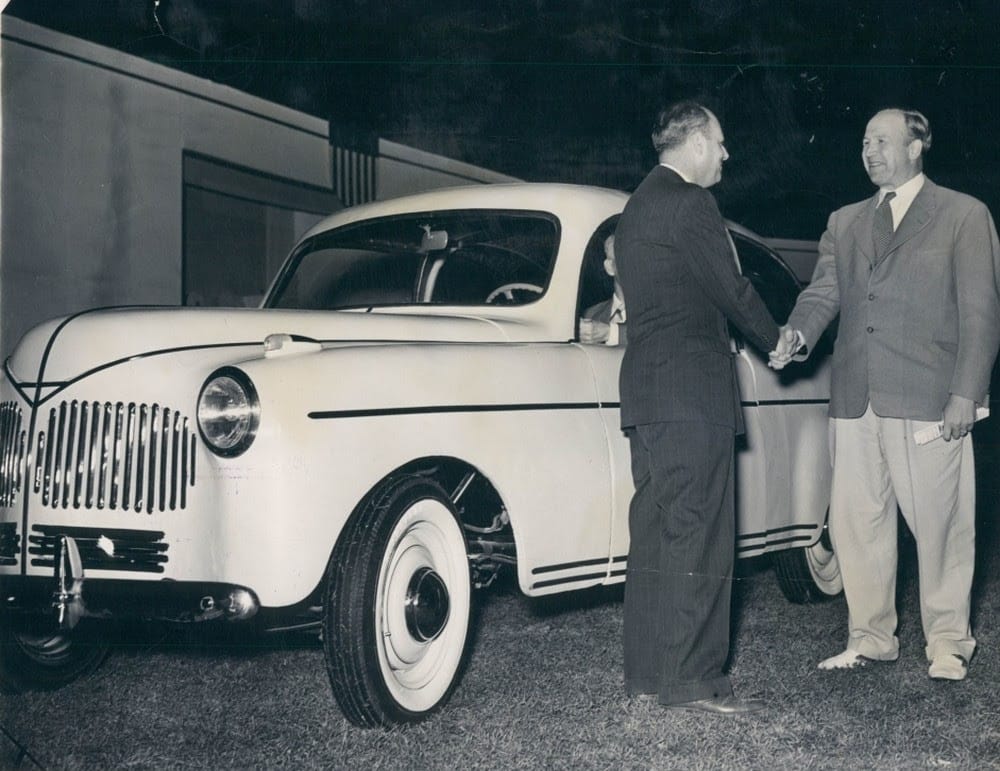
Stills from the car’s introduction. • The Henry Ford museum
The Ford assembly line was a by-product of this concern for every aspect of producing a consumer product — actually, cars were almost a by-product of his from-the-cradle-to-the-grave process as well. I mean, this is a guy who not only expected his cars to be fuelled by ethanol, but who tried to aspired to control his own plantations for the production of rubber.
An engineering project led by one of Ford's research labs, the Soybean Car was a simple tubular steel frame that 14 plastic panels were bolted to. Powered by a flathead V-8, the car would have been quite theperformer, as it weighed less than 900 kg (2,000 lbs), a reduction of something like 25 per cent over a comparable production model.
Shown twice in 1941 at local Detroit events, a number of factors conspired to see the Soybean Car destroyed, for good — leaving lots of unanswered questions in its wake.
With soy-based wiring harnesses and various other components made from organic sources now a normal part of the automotive production process, never forget that leaders can both be assholes and ‘good guys’ who invest in technologies that have real societal purpose and/or company stock valuation benefits.
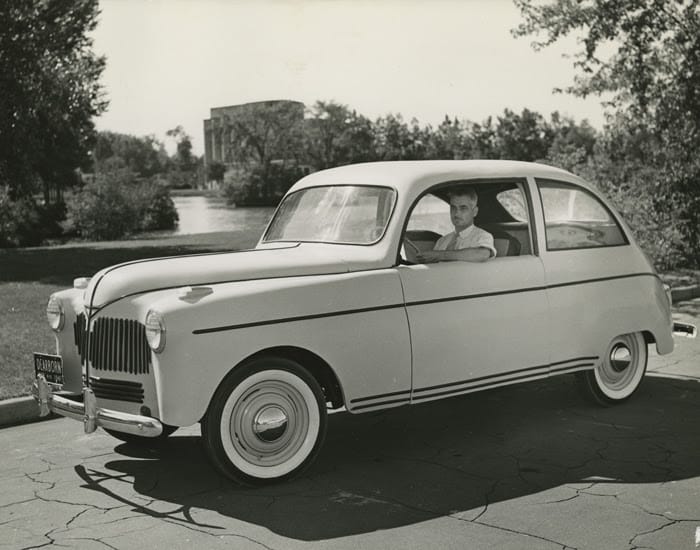
Neither Henry Ford nor the Ford Motor Company ended up producing a Soybean Car, and his company’s subsequent legacy became firmly tied to that of the pickup truck.
To me, if you were to draw the opposite vehicle to a squidgy, soft-edged, organically engineered 2-door sedan, I bet you’d draw a Tesla Cybertruck.
A reminder: history never repeats, it remixes.
